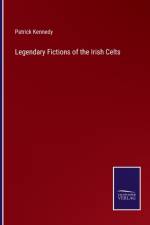von Patrick Kennedy
51,00 €
It is common knowledge that a group of birds is referred to as a flock. Some particular species have their own names, such as a "Gaggle of Geese" or lesser known example is a "Murder of Crows". Other specific groups in the animal kingdom include a "Pride of Lions" or a "Pack of Wolves". In the primate world a group of chimpanzees is called a "Congress". Seems befitting. A group of gorillas is called a "Band of Gorillas". Of particular interest, as it may relate to this story, there is a little known species of gorillas that existed thousands of years ago. They were in the genus Gigantopithecus. No one really knows how big they were, but from the few fossils found, it was determined that they were the largest known apes that ever lived.In other classifications, like those of humans beings, there are many different ways to refer to specific groups. For instance, they can be described by regions, religions, families, communities, townships or classes. As an example, a term used for different groups of the native people of Ireland, were called Clans. Further, the people of Ireland in general were commonly referred to as Irish Gaelic. The Irish Gaelic, were considered by many, to be the true natives of Ireland. That was until Vikings started plundering Ireland. This went on for centuries. These Vikings were dreaded and feared by all of Ireland. The Vikings were notorious for kidnapping the indigenous people of Ireland and selling them into slavery. The Vikings were also notorious for other crimes such as robbery, theft, rape and murder. These bands of foreign invaders were mostly comprised of Teutons, Danish, Swedish and Norwegian. Many of which were of the Presbyterian denomination. Large groups of these unwanted invaders, eventually migrated to Ireland and made it their permanent home. They became prevalent in the population and their political power grew in proportion. With intermarriages between the natives of the land, and the immigrants, some of the earliest towns were established, including Dublin, Wesford, Cork and Limerick. Eventually, these immigrants were absorbed into the religious and political life of the country, adopting the Irish language and customs.This story is of a particular Irish Clan Leader, who was willing to do most anything, including falling back on the ways of the Vikings, to support his followers. He and many members of his Clan, set off on a voyage to a remote, unchartered island in order to find an alleged treasure. What they found was much more than they could have imagined or ever bargained for.










